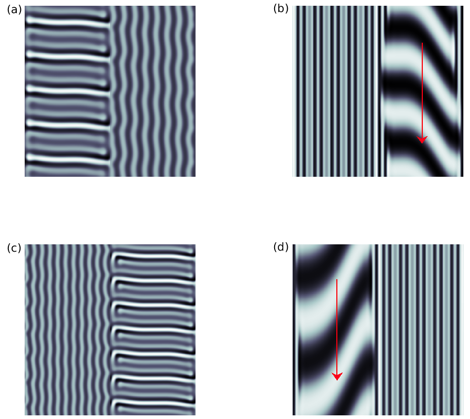Understanding Sensory Induced Hallucinations: From Neural Fields to Amplitude Equations
Authors
Nicks, R., Cocks, A., Avitabile, D., Johnston, A., Coombes, S.

Abstract
Explorations of visual hallucinations, and in particular those of Billock and Tsou [Neural interactions between flicker-induced self-organized visual hallucinations and physical stimuli. Proceedings of the National Academy of Sciences, 104(20):8490-8495, 2007], show that annular rings with a background flicker can induce visual hallucinations in humans that take the form of radial fan shapes. The well- known retino-cortical map tells us that the corresponding patterns of neural activity in the primary visual cortex for rings and arms in the retina are orthogonal stripe patterns. The implication is that cortical forcing by spatially periodic input can excite orthogonal modes of neural activity. Here we show that a simple scalar neural field model of primary visual cortex with state-dependent spatial forcing is capable of modelling this phenomenon. Moreover, we show that this occurs most robustly when the spatial forcing has a 2:1 resonance with modes that would otherwise be excited by a Turing instability. By utilising a weakly nonlinear multiple-scales analysis we determine the relevant amplitude equations for uncovering the parameter regimes which favour the excitation of patterns orthogonal to sensory drive. In combination with direct numerical simulations we use this approach to shed further light on the original psychophysical observations of Billock and Tsou.
Links
PDF DOIBibTeX
@article{nicks2021understanding,
title={Understanding Sensory Induced Hallucinations: From Neural Fields to Amplitude Equations},
author={Nicks, Rachel and Cocks, Abigail and Avitabile, Daniele and Johnston, Alan and Coombes, Stephen},
journal={SIAM Journal on Applied Dynamical Systems},
volume={20},
number={4},
pages={1683--1714},
year={2021},
publisher={SIAM}
}